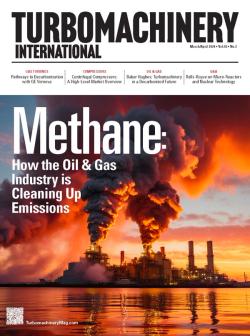
OR WAIT null SECS
© 2024 MJH Life Sciences™ and Turbomachinery Magazine. All rights reserved.
MUST CHP OBEY THE LAWS OF THERMODYNAMICS?
When I ask engineers of all ages their least favorite class in college, thermodynamics usually comes out on top. But in real life, when thermodynamics conflicts with hopes, wishes and desires, thermodynamics usually wins. Enter combined heat and power (CHP).
Although there are differing definitions, CHP is generally understood to be the beneficial use of exhaust heat from a heat engine, such as a gas turbine (GT) or gas engine, for domestic or industrial heating, drying, chemical conversion, refining, food processing or other thermal energy application.
In heat engines, almost all of the energy losses (i.e., the inefficiencies of the engine) are converted into hot exhaust gas. Since most heat engines operate between 20% to 45% efficiency, most of the remaining 55% to 80% of the energy is theoretically available as thermal energy. That means that a lot of hot air is available for CHP.
One of the somewhat misleading features of CHP applications is that efficiency appears to be very high. Quoted efficiencies often exceed the Carnot limit which is the theoretical highest possible efficiency for any heat engine.
But how can relatively simple CHP machines achieve better than 80% efficiencies, while the most state-of-the-art combined cycle plants barely reach above 60%? The answer: not all efficiency is created and calculated equally. In other words, there is difference between electricity produced and heat produced.
The first law of thermodynamics states that energy is conserved. A GT converts fuel into either electric power or hot exhaust gas. If we somehow manage to use all the hot exhaust gas from a GT for some practical and useful purpose, we could claim a 100% efficient process.
Unfortunately, heat has often limited use compared with electricity. We can convert nearly 100% of electrical energy to low-grade heat (a stove does this), but we cannot convert low-grade heat into an equivalent amount of electricity. This points to the irreversibility of energy conversion processes.
In CHP efficiency calculations, heat and electricity are treated the same. It does not matter whether the recovered energy in a CHP system is electric energy or low-quality heat.
It is true that an 80% efficient CHP cycle converts 80% of the fuel into useful energy. But more than half of that useful energy is in the form of heat and the rest is electricity.
Why is electricity more valuable than heat? If we have electricity, we can use it to generate heat, but we can also use it to run motors, computers and lights. If we have heat, only a small portion of the heat energy can be converted into electricity or used for other applications.
In a CHP application, the energy in the fuel gets converted into heat and electrical power, and the limit of the conversion efficiency is simply the minimum temperature achievable for the exhaust gases.
This minimum temperature is determined by the size of the exhaust gas heat exchanger and the minimum exhaust temperature allowed to avoid condensation in the exhaust.
In other words, the efficiency of the GT has practically no impact on the CHP efficiency, but simply determines the ratio between electrical power output and heat output. A more efficient gas turbine will produce more electricity and less heat.
On the other hand, the firing temperature of the GT has a significant impact on exhaust heat and any heat lost through radiation or the engine lube oil is not available for CHP.
Published CHP data for engine exhaust heat, engine power and engine heat rate, often neglects first law principles. What goes in must come out. Not more. Not less.
Energy in the fuel at the inlet into the system is defined by the lower heating value of the fuel. This energy can show up as shaft output power or as exhaust heat. Some amount leaves through radiation, the lube oil, or minute inefficiencies in combustion. The exhaust heat can be used for a bottoming cycle or used directly in some processes. This energy extraction results in a reduction in exhaust temperature.
Typical bottoming cycles use the exhaust heat to create steam to drive a steam turbine, organic Rankine cycles or supercritical CO2 cycles. In some cases, the heat is used directly for industrial process heat input, heating, drying and refining.
The exhaust heat available depends on the GT exhaust temperature and the allowable stack exit temperature (which cannot drop below a certain value to avoid water condensation). The practical exit temperature is higher since increasing the removed energy requires larger heat exchangers.
Also, analyzing operational data sometimes shows inconsistent results. For a given GT model, engine performance can vary. If an engine is cited that provides a better than average heat rate and shaft power while the exhaust heat and exhaust flow numbers are used based on average engine performance, CHP efficiency becomes too optimistic.
Why? An engine that performs above average on heat rate will have below average exhaust heat. The GT experiences heat losses. All the fuel energy is not leaving the system as exhaust heat or shaft power, but rather is radiated from the engine casing via losses in the generator, the gearbox, or via heat rejection in the lube oil coolers. But if the available exhaust heat is calculated as the fuel heat input minus the shaft power output, it is over estimated.
Making beneficial use of exhaust heat from a gas turbine is obviously the right thing to do. But a simple cycle GT cannot exceed Carnot efficiency and is seldom higher than 45%. Adding exhaust energy in CHP applications makes total efficiency artificially high. It should never be directly compared to GT efficiency. Apples are not oranges.


